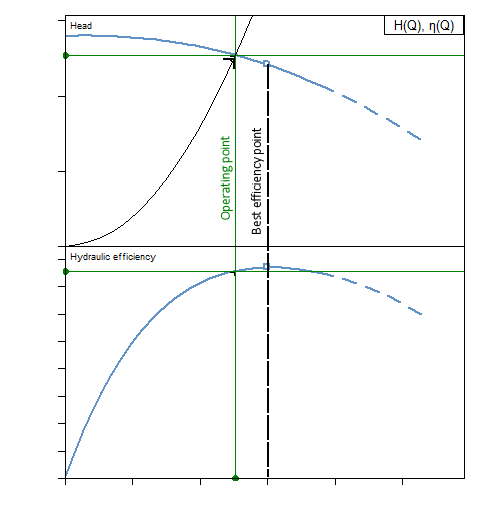This eliminates the need for shaft sealing by means of a stuffing box or mechanical seal, which is required for other pump types.
The pumped medium serves both to lubricate the motor bearings (plain bearings) and to cool the interior of the rotor. This so-called wet space is sealed off from the atmosphere or the motor winding by a can. This can has an average wall thickness of only 0.1 to 0.3 mm and is made of non-magnetic high-alloy steel. The canister is statically sealed using O-ring seals.
Function / feature
The advantage of this construction is clearly that it is completely maintenance-free. No exchange or messages, no exchange of sealing elements, but perfect function during the entire operating time.
The smoothness of this design is remarkable. Apart from the damping properties of the water, in which the rotating parts move, the reason for this smoothness is the sliding bearing of the rotor. This eliminates all rolling or rolling noises that occur in rolling bearings z. B. can occur by means of ball bearings.
Not only the smooth running, but also the service life and the degree of susceptibility to failure are decisively influenced by this component.
The design of the bearing is one of the most important design features of wet rotor pumps. In addition to the structural design of the bearings, the material pairing of the bearing is of decisive importance for the operational safety of the pump. The following combinations have become established in practice:
- Ceramic shaft / ceramic bearing
- Hardened chrome steel shaft / carbon bearing.
The ceramic bearing, shaft and bearing made of the same material, a pairing that contradicts traditional bearing theory, has very little bearing wear on the basis of the extremely hard and brittle material aluminum oxide ceramic with optimal bearing lubrication. However, if there is no requirement for proper lubrication, e.g. B. Dry running due to air accumulation or steam formation in the event of overheating, there is a risk of blockage after a short time. In addition, the ceramic shaft is relatively susceptible to breakage when subjected to mechanical stress, e.g. due to transport vibrations or when attempting to unblock it due to tilting with a screwdriver.
In contrast, the two-material bearing – hardened chrome steel shaft / carbon bearing – shows the very good dry-running or emergency running properties of metal-impregnated carbon bearings. In addition, there is the proverbial break resistance of the hardened steel shaft against impacts and vibrations.
Operational behavior
On the basis of decades of practice with millions of pumps, a statistical mean under normal operating conditions and depending on the pump design has resulted in a service life of approx. 40,000 to 70,000 operating hours. This corresponds to an average of 8-12 years with normal heating operation. The optimal functionality of this construction is also underlined by the fact that quite a few wet-running pumps run for more than 15 to 20 years (over 100,000 operating hours) without malfunction and maintenance.
Glandless pumps in building technology consistently have the speed control of the drive motors as a special feature. In the meantime, manually switchable controls are no longer permitted for new installations in many countries and have largely been replaced by automatic controls.

